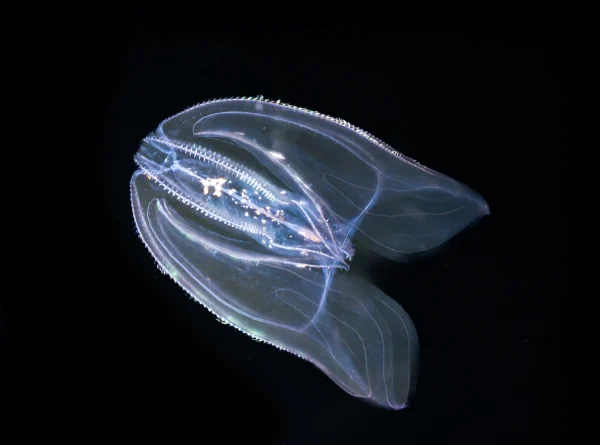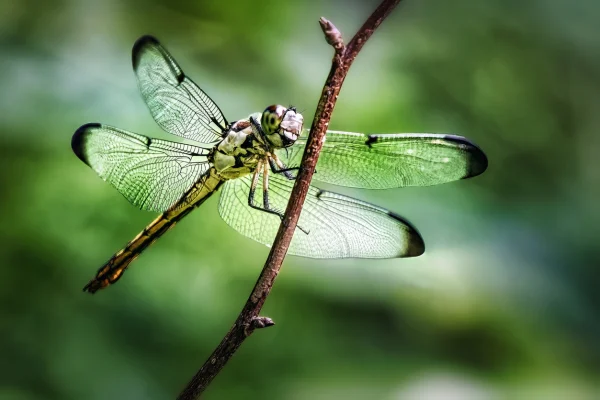
The region is home to some of Earth's most ancient animals, including one species that is over 600 million years old
How long have you lived in Hillsborough County?
While many are new to the area, there are also plenty of residents who have roots going back countless generations.
In fact, some locals have ties to the area that go back millions of years.
Meet a handful of long-lived Hillsborough natives and learn how they glow in the dark, bleed blue blood, and eat hundreds of mosquitoes a day. Want to pay them a visit? Find a Hillsborough County Conservation Park to see them in their natural habitat.
Comb Jelly

Comb jellies (also called ctenophores) have been floating through Earth's waters for over 600 million years. These transparent animals look similar to jellyfish but are a different species altogether. In fact, these gelatinous creatures can't even sting.
Comb jellies get their name from the comb-like cilia around their bodies, which are used to propel them through water. Their light-diffracting cilia, along with photoproteins created within some comb jellies, can make the animals shimmer or glow, especially at night.
There are roughly 100 to 150 different types of comb jellies, many of which are hermaphroditic. This means they can produce both eggs and sperm to reproduce. Some types can even reproduce through cloning themselves.
Comb jellies can be found in non-freshwater, such as estuaries, marshes, and bays, including Tampa Bay. Though they range in size from one millimeter to five feet, the average comb jelly is about four inches long.
Horseshoe Crab
Horseshoe crabs are thought to have made their first appearance roughly 445 million years ago, that's about 200 million years before dinosaurs existed. Technically not a crab, these animals are arthropods and more closely related to scorpions than crustaceans.
Due to the copper content in their blood, these unique animals bleed bright blue. Pharmaceutical and medical device makers use the valuable blood milked from horseshoe crabs to test products for impurities, such as bacteria.
Local legend claims that when Spanish explorers arrived in what is now Ruskin, they saw horseshoe crabs and thought they were giant cockroaches. It is believed that for this reason, early settlers named the cove created by Little Manatee River draining into Tampa Bay, Cockroach Bay.
Dragonfly

Dragonfly fossils formed over 300 million years ago indicate that these bugs were buzzing around when Earth's continents were still conjoined as the supercontinent, Pangea. Since then, over 5,000 species of dragonflies evolved, 100 of which can be found in Florida.
Over hundreds of millions of years, these enduring insects have perfected their flying and vision. Their ability to flutter sideways, backwards, and hover in a single spot for over a minute allow them to catch prey with impressive accuracy. Their advanced sight, due to huge eyes covering most of their heads, allows for nearly 360-degree vision and the capacity to see ultraviolet light.
Though dragonflies are carnivores, they pose no serious risk to humans. However, they are a fatal threat to other insects, including mosquitos, which they can eat hundreds of in one day. Even in their young aquatic stage, these helpful insects mitigate mosquitoes. Female dragonflies lay their eggs in water, which allows the emerging nymphs to feed on mosquito larvae below the surface.
Thanks to their help curbing mosquito populations, dragonflies will likely be welcomed in backyards across Hillsborough County for the next 300 million years.

